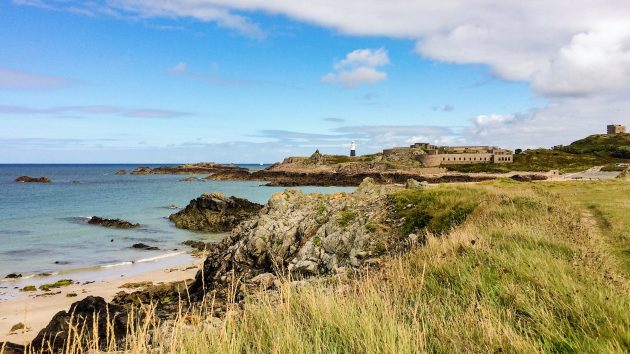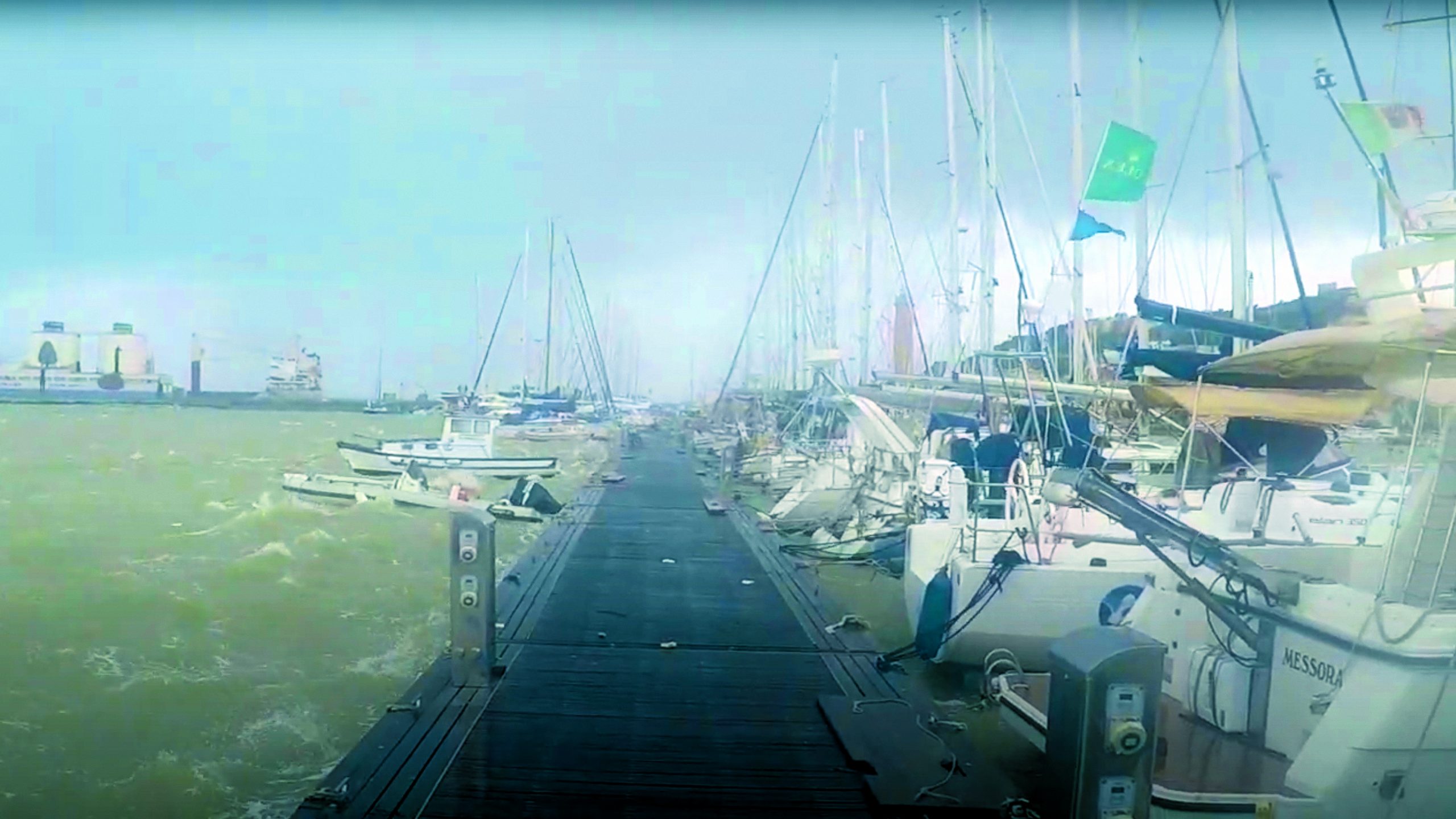Octogenarian adventurer Peter Baylis gets a scare in the Channel Islands when sailing to Alderney via the Swinge
Bragging about my cock-ups doesn’t come naturally, but I want to share this one which happened in the Swinge, as it might help other readers to avoid a similar unpleasant and potentially disastrous situation, writes Peter Baylis.
It was serious and I feel bad about it, so maybe a confession will be cathartic for me too.
I’m an old bloke in my early 80s – perhaps not as nimble as I used to be, but fit in body and sound of mind.
I’ve been messing about in boats for most of my adult life and have been a serious sailor for more than 30 years.

Peter’s Hallberg-Rassy Sable is his favourite boat to date. Credit: Peter Baylis
I’m the holder of an RYA Yachtmaster Offshore qualification and have owned and sailed Sable, my Hallberg-Rassy 36 for the last 16 years.
I’m a cautious sailor who is becoming more risk-averse with each year.
Before I retired I was heavily involved with aircraft safety, which included investigating accidents to determine their cause and the implementation of actions to prevent a recurrence.
Without doubt, some of that safety culture has bled across into my sailing world.
Departing Guernsey
I recently returned from a trip to the Channel Islands with a friend who is a very experienced and knowledgeable sailor.
We spent a few pleasant days in Guernsey and Sark and decided to spend our last night in Alderney.
It’s the 20-mile trip from Guernsey to Alderney that I want to talk about.
We set off from St Peter Port at high water minus three hours to take advantage of the north-east stream – a fair tide all the way to Alderney’s Braye Harbour.

Credit: Maxine Heath
There was only a light wind in the Little Russel between Herm and Guernsey, and it was from the north east, dead on the nose and definitely a motoring job.
Sable’s engine is a powerful Volvo Penta D2 55 and it was characteristically quiet and smooth as it shoved us along at between 6 and 7 knots.
The sun was out, and as we yarned and ate pork pies, we didn’t have a care in the world.
We were heading for one of the UK’s most dangerous stretches of water, but why should we care? We’d done it dozens of times before and have never had a problem.

Peter was lulled into a false sense of security having safely navigated Alderney’s notorious waters several times before. Credit: Peter Baylis
‘The Swinge? – it’s a piece of cake mate!’ We were confidence personified!
We headed on north towards the infamous Pierre au Vraic rock that uncovers at low water, leaving it well to starboard.
A mile or so north of Pierre au Vraic we started our turn to starboard and into the Swinge.
Everything was where it should be, with the north-west coast of Alderney about a mile to starboard and the rocky island of Burhou, with its refuge hut at the summit, half a mile to port.
Into the Swinge
Soon we were in the overfalls with the fair tide carrying us over the ground at 10 knots.
It was all very exciting – the overfalls are a spectacular sight, but the boat remained steady and under control.
It was at this point that we noticed that while heading north-east towards Braye Harbour at 10 knots, which was good, the tide was also taking us to the north towards the rocky shore of Burhou, which wasn’t so good.

Relieved to be back in safer conditions after their near-miss in the Swinge. Credit: Peter Baylis
We assessed the situation for a minute or so before I started frantically clicking plus 10s on the autopilot to take us away from Burhou and its rocky southern coastline.
It didn’t seem to be working – the rocks were getting rapidly closer.
I dashed below to check the chartplotter and to my horror we were now over a green bit on the chart.
At this point my mate shouted that the depth was down to 7m and he simultaneously initiated a 90° turn to starboard, pushing the throttle forward to full chat.
Continues below…
The UK’s 11 fiercest tide races
Breaking waves and lurking rocks have earned some British tidal races a fearsome reputation. Dag Pike explains how to navigate…
We Tested 16 of the Best Lifejackets for Boating and Sailing
We all have lifejackets on board, but do you know what yours is actually like to use? We test 10…
Surviving a storm in harbour: lessons learned
After surviving a storm in harbour while moored in Sicily, Trevor McIlwaine asks himself - do I really like to…
Sunk in a storm with no liferaft: lessons learned
Bruce Goodwin's ocean crossing with friends was nearing an end when they encountered a storm; the liferaft was lost, the…
The horror ended as quickly as it had started.
Within seconds that 55 horsepower of Swedish diesel had slowly but surely clawed us away from danger and into deep water.
The next 15 minutes or so to Braye Harbour were uneventful and with little conversation between us. I guess we were both mulling over how close we had come to disaster.
How near were we to disaster though?

Peter Baylis is a retired engineer who spent his entire working life in the aerospace industry. Having caught the sailing bug with a Mirror dinghy, which he even took with him on his honeymoon, Peter has owned many boats. However, his all-time favourite is his current Hallberg-Rassy 36 Mk2, Sable. He cruises the south coast of England from his base in Dartmouth and makes trips to the Channel Islands. Credit: Peter Baylis
Well, in my opinion we were within seconds of striking rocks and, travelling at 10 knots in overfalls, that would not have ended well.
The Hallberg Rassy is a sturdy and well-found boat, but at that speed I suspect she might have left her keel behind, leaving the boat a total loss.
And as for us, who knows?
Pitched into overfalls with a strong tide and without lifejackets, as an 80-year-old I rated my chances of survival as just about zero.
The real take-home lesson in all of this was the obvious one: things happen awfully quickly when you’re travelling at 10 knots over the ground.
Lessons learned
If I ever navigate the Swinge again – and at this moment I’m not keen – these are the changes I would make to my approach. You can probably
think of more.
- Wear a lifejacket: It’s too late to put one on when problems suddenly happen. If you can’t wear one all the time at least do so when sailing towards any sort of hazard, in rough seas or at night.
- Don’t rely on the autopilot in a tidal race: I love my Autohelm, but when you require precise and immediate course correction, turn it off and keep your hands on the wheel.
- Don’t rely solely on eyeball navigation: Plot waypoints on your chartplotter before you leave and keep monitoring progress to ensure you stay on track.
- Leave Pierre au Vraic to port: On this trip from Guernsey to Alderney via the Swinge, leave the rock hazard Pierre au Vraic to port. Leaving it to starboard as we did took us a couple of unnecessary miles to the west of Alderney and provided a greater opportunity to be swept to the north. I think it is better to keep closer to Alderney and the south side of the Swinge where it seems to be calmer, although be aware of outlying rocks.
Pick up a copy of Sail the British Isles book from Yachting Monthly

From the makers of Yachting Monthly comes this essential guide to sailing around the UK and Ireland. Every iconic location in the British Isles is covered here, from peaceful ports like Dartmouth to sailing hotspots such as the Isle Of Wight. Perfect for planning a long weekend getaway or an ambitious break on the waves, Sail The British Isles is perfect for any boating enthusiast who is itching to discover their next adventure.
Follow us on Facebook, Twitter and Instagram.








